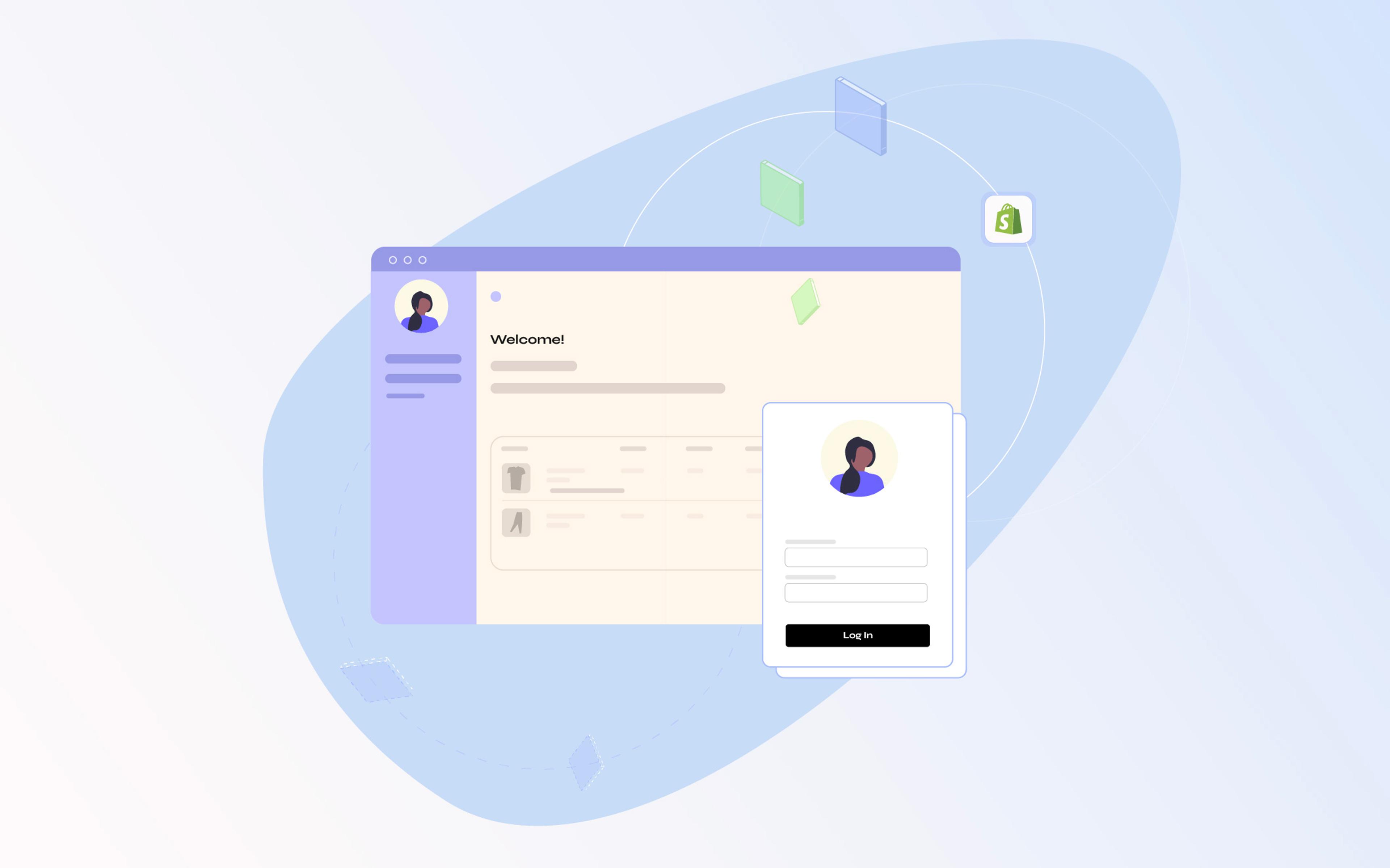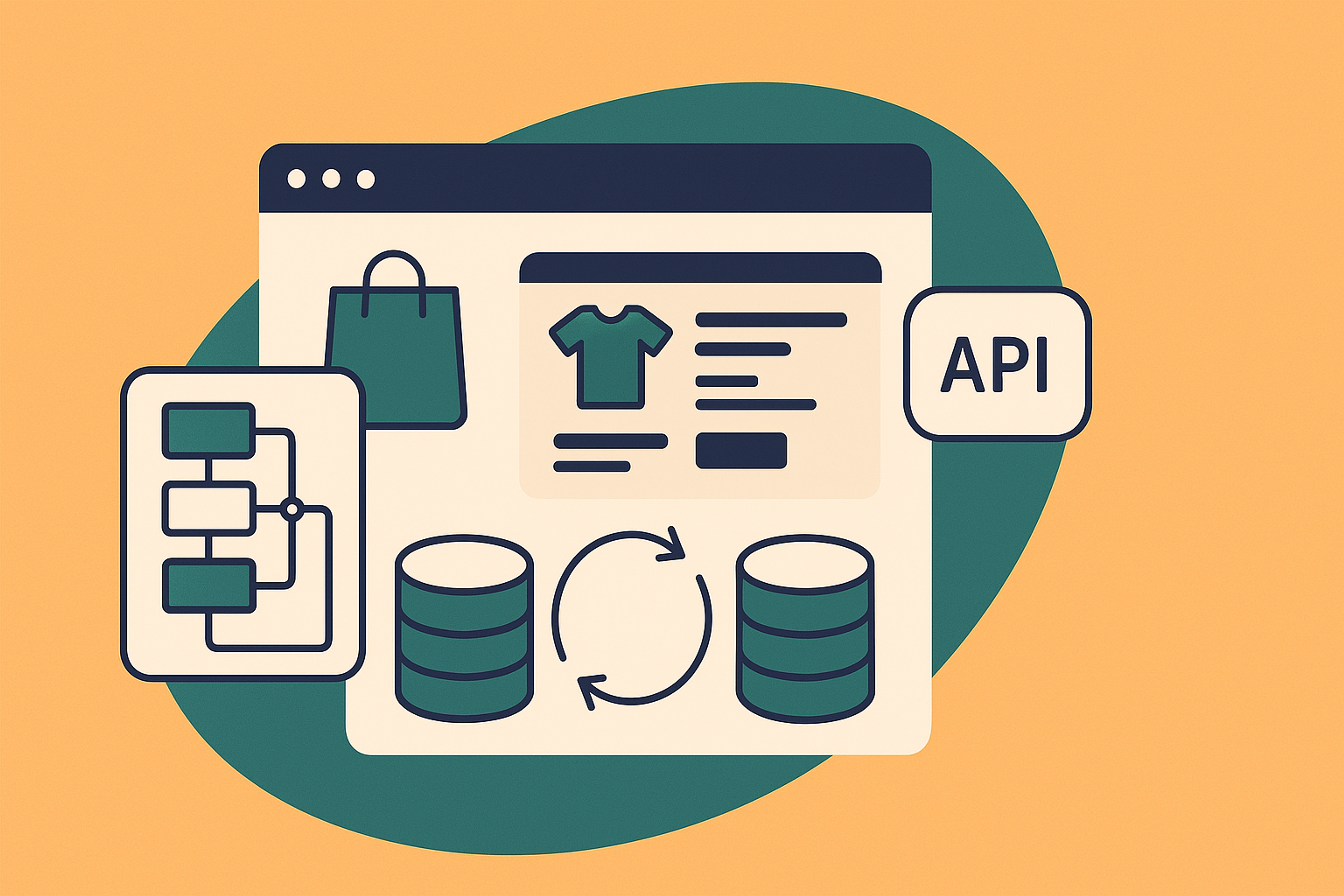For a DTC brand, a well-designed customer portal directly impacts whether customers stay or churn. Self-service portals can resolve 40-70% of support tickets without agent intervention, and customers using portals report 68% fewer delays compared to those relying on traditional support channels. When customers can manage subscriptions, track orders, update preferences, and handle returns without friction, they're more likely to stay engaged with your brand.
Unfortunately, the Shopify customer portal landscape is fragmented. You're choosing between three competing approaches—Shopify's native Customer Accounts with UI Extensions, app-provided portals from your subscription and loyalty vendors, or a custom-built solution. Each comes with different technical constraints, maintenance costs, and UX limitations. Choose the wrong approach, and you're either locked into a fragmented experience that erodes trust, or committed to a custom build that requires ongoing investment without clear ROI.
From our work building customer portals for mid-market and enterprise DTC brands, we've seen how this decision plays out. Below, we'll walk through each approach—what it offers, where it falls short, and which business models it actually serves—then give you a framework for choosing the right one based on your retention strategy, technical resources, and growth stage.
Shopify's Native Approach: Low Maintenance, Limited Control
Shopify's Customer Accounts and Customer Account UI Extensions offer the most "Shopify-native" way to build a customer portal today. Launched in January 2023 and opened to app developers in December 2024, this approach represents Shopify's strategic shift toward extensibility—the same philosophy behind Checkout UI Extensions. Instead of letting merchants hack together solutions with Liquid code and app embeds, Shopify is creating a controlled, composable environment where functionality comes from modular blocks.
This approach lets you extend Shopify's own customer account area by adding custom pages and blocks, either built by your team or provided by apps. You can mix native Shopify features—like order history, self-serve returns, and account details—with custom-built extensions that enhance the experience. Think of it as Shopify providing the foundation and letting you furnish the rooms.
 The Customer Account portal with some custom blocks
The Customer Account portal with some custom blocks
Pros:
- Shopify-native UX: Your portal inherits Shopify's secure, modern interface and authentication system, including passwordless login via Shop Pay (already familiar to 150+ million users).
- Built-in functionality: Includes order tracking, self-serve returns, and address management out of the box.
- Easy integration with apps: Apps that have built UI extensions plug directly into this framework with no custom integration work.
- Lower maintenance overhead: Less need to handle authentication, hosting logic, or security updates—Shopify manages the infrastructure.
Cons:
- Limited design flexibility: You're constrained by Shopify's layout and component structure. You can't override CSS or create truly custom interfaces.
- Incomplete app ecosystem: This is the real challenge. While Shopify is clearly investing in this architecture, many apps still rely on legacy customer portals. If you're using Recharge for subscriptions, Yotpo for loyalty, and Loop for returns, you'll need to wait for each vendor to build UI Extensions—or accept that parts of your customer experience will still live outside this unified system.
- Migration complexity: If you're already using legacy app portals, switching to Customer Account UI Extensions means either convincing every app vendor to rebuild their integration or abandoning apps that won't migrate. This isn't a flip-the-switch upgrade.
Best for: Merchants who want a low-maintenance, secure, and scalable solution that stays aligned with Shopify's roadmap, and who can accept design constraints in exchange for reduced technical overhead. This works especially well if you're building a new store or using apps that have already adopted UI Extensions.
App-Based Portals: Fast Setup, Fragmented Experience
Many Shopify apps—subscription managers like Recharge, loyalty programs like Yotpo, returns systems like Loop—offer their own customer portals. These can be embedded in your theme as standalone pages, theme blocks, or even full-page portals hosted by the app.
Each app manages its own UI and logic, often linking back to Shopify data via APIs. This approach is quick to set up and requires minimal coding, since most apps handle their own authentication and interface. For brands with a single dominant use case—say, a subscription business where 80% of customer portal activity is managing subscriptions—this can work well.
 An example of the Customer Portal offered by Loop, a popular returns app. Everything is configurable from the app itself, without the need for custom integrations
An example of the Customer Portal offered by Loop, a popular returns app. Everything is configurable from the app itself, without the need for custom integrations
Pros:
- Fast and easy setup: You can launch a customer portal experience within hours or days, not weeks.
- Low technical overhead: App developers handle updates, security, and UI improvements. You're essentially renting functionality.
- Modular flexibility: You can add or remove apps without major rework, though this comes with trade-offs (see cons).
Cons:
- Fragmented experience: This is the killer. Each app renders its own UI, often with different design patterns, navigation structures, and even login flows. A typical DTC brand using Recharge, Yotpo, and Loop might send customers to three different portals, each with different visual styles and interaction patterns. One might use a sidebar navigation, another a top nav, and a third might be a full-page takeover. Your customer has to learn three different interfaces just to manage their relationship with your brand.
- Limited branding control: Most app portals offer basic theming—colors, logos, fonts—but you can't deeply customize the layout or UX. You're working within the app's design system, not yours.
- Customization challenges: If you want to modify these experiences beyond what the app allows, you're either stuck or you're adding brittle workarounds (custom CSS injections, JavaScript hacks) that break when the app updates.
Best for: Brands that prioritize speed and simplicity over control, especially small to mid-sized stores using multiple apps that already provide customer-facing features. This is also a strong fit for brands with a single dominant use case—like subscription management—where one app portal handles 80%+ of customer needs and fragmentation is less of an issue.
Custom Builds: Total Control, Ongoing Investment
The third option is to build your own custom customer portal, either as part of your Shopify theme or as a standalone web application.
This approach involves creating a bespoke interface that connects to Shopify's Storefront API, Admin API, or third-party app APIs. It can live within your existing theme or as a separate site (for example, a subdomain like account.yourstore.com) that shares your brand's design system.
For example, you might use Shopify's APIs to fetch customer order history, connect with Recharge for subscription management, integrate with a loyalty program through their API, and layer on custom features—all inside one unified dashboard that looks and feels like your brand.
 The custom customer portal we built for Cometeer. It connects with Recharge APIs to manage subscription data and exposes several custom-built functionalities, including a bespoke coffee box management experience powered by their proprietary recommendation algorithm.
The custom customer portal we built for Cometeer. It connects with Recharge APIs to manage subscription data and exposes several custom-built functionalities, including a bespoke coffee box management experience powered by their proprietary recommendation algorithm.
Cometeer needed a custom portal because their business model demanded it. They required a completely bespoke coffee box management experience that would leverage their custom recommendation algorithm—something no off-the-shelf app could provide. They also found Recharge's out-of-the-box portal too slow and cumbersome for their customer experience standards. Read the full Cometeer case study to see how a custom portal became a competitive differentiator.
Pros:
- Total flexibility: Design and implement every interaction, layout, and integration exactly how you want. Your portal becomes an extension of your brand, not a compromise.
- Unified experience: Bring data from multiple apps and systems into one branded interface. Your customer sees one cohesive experience, not a patchwork of app UIs.
- Full ownership: Control your roadmap, UI, and data flows. You're not waiting for app vendors to add features or fix bugs—you build what you need, when you need it.
- Performance optimization: You can optimize load times, interactions, and mobile experiences in ways that app-based portals don't allow.
Cons:
- Higher development cost: Building a custom portal requires significant upfront investment in design, development, and testing.
- Integration complexity: You depend on whether each third-party app exposes the APIs you need. You're betting that Recharge, Loop, or your other vendors will maintain stable APIs and won't sunset features you've built against.
- Maintenance overhead: Every API update, Shopify version change, or app deprecation can require adjustments. You need ongoing developer resources—either in-house or via an agency—to keep the portal running smoothly.
Best for: Brands with strong technical resources (in-house or via an agency) who see the customer portal as a strategic differentiator and want a fully unified experience across all post-purchase touchpoints. This is especially relevant for subscription businesses or brands with products that require rich after-care and ongoing customer education.
How to Choose the Right Approach
Choosing how to build your customer portal comes down to balancing control, complexity, and cohesion. But more fundamentally, it comes down to how you think about retention.
If your products are typically one-time purchases with minimal post-sale engagement, you probably don't need a sophisticated portal. The app-based or Shopify native approach will serve you fine, and you can scale to nine figures and beyond with a standard experience.
But if you're running a subscription business, selling products that require ongoing education or support, or competing in a category where retention is the primary growth lever, then your customer portal is a retention engine, not just a commodity. In those cases, the investment in a custom or hybrid solution often pays for itself through reduced churn and increased lifetime value.
Here's a practical framework:
| Your Situation | Best Fit |
|---|---|
| You want to launch quickly with built-in features and minimal technical overhead | Shopify Customer Accounts + UI Extensions |
| You're using multiple apps, want minimal coding, and can accept some fragmentation | App-provided portals |
| You need a cohesive, fully branded experience and have technical resources | Custom-built portal |
| Your business model depends heavily on retention, subscriptions, or ongoing customer education | Custom-built portal |
| You want flexibility with lower maintenance than a full custom build | Hybrid approach (UI Extensions + custom theme work) |
In our experience, the app-based approach works well for early-stage brands or those with simple needs, but because of the poor and fragmented UX it creates for the customer, it's rarely a long-term solution for brands where retention is a primary growth driver
Your Portal Strategy Reflects Your Retention Strategy
As you've seen, there is no universally right approach to building your customer portal in Shopify:
- Shopify's native Customer Accounts offer a secure, low-maintenance foundation that will get richer as Shopify continues investing in extensibility.
- App-based portals provide speed and simplicity but often at the cost of fragmentation.
- Custom builds deliver total control and unified experiences but require ongoing investment.
The right choice depends on your business model, your technical resources, and how central post-purchase experience is to your retention strategy. The only wrong answer is ignoring the decision until customer complaints force your hand.
If you're unsure which approach best fits your brand, or if you need help evaluating the trade-offs and implementing a customer portal that turns retention into a competitive advantage, let's talk. We can help you design a customer account experience that delivers results and exceeds your customers' expectations.





